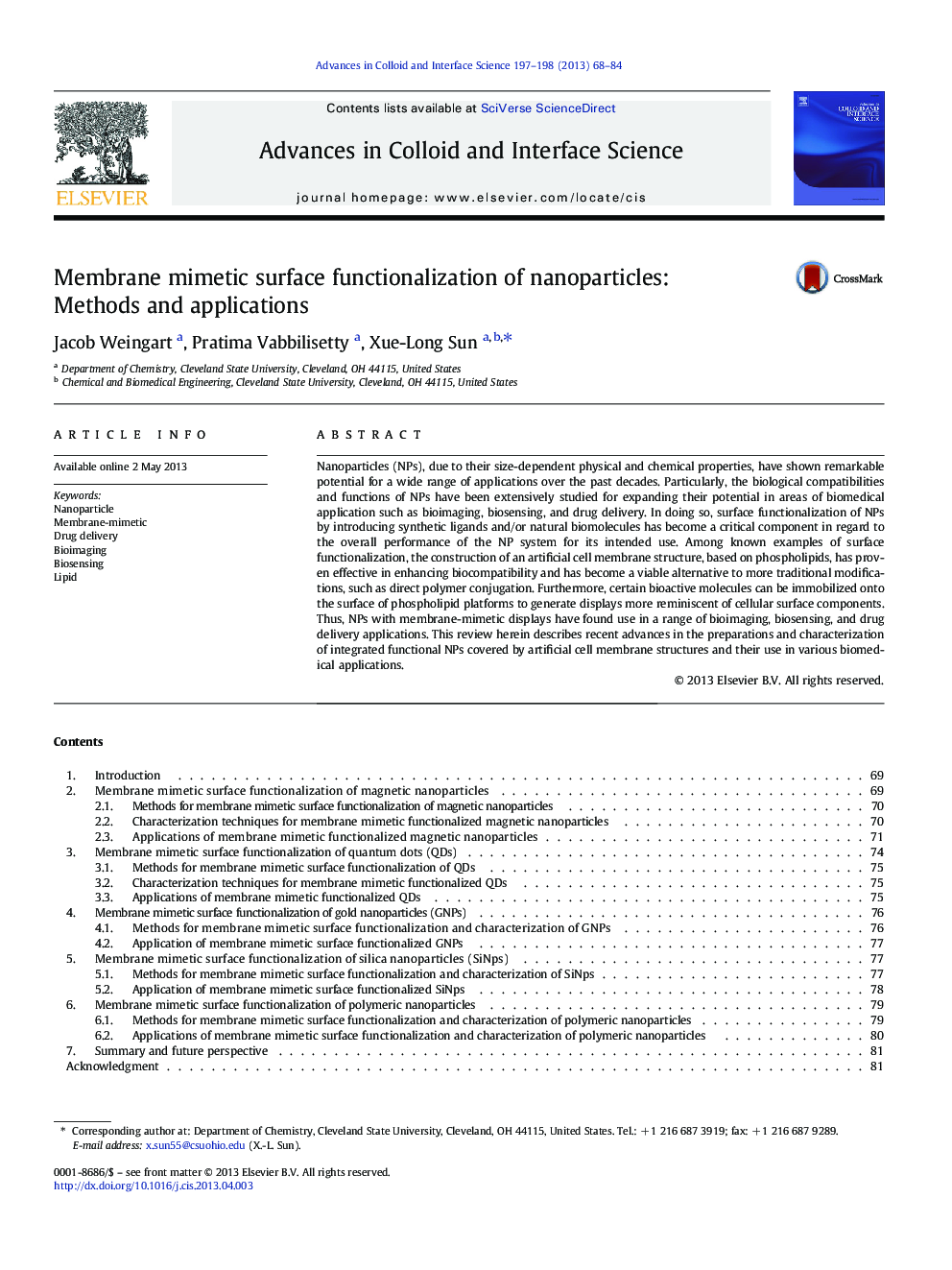| Article ID | Journal | Published Year | Pages | File Type |
|---|---|---|---|---|
| 590826 | Advances in Colloid and Interface Science | 2013 | 17 Pages |
•Nanoparticles have shown remarkable potential for a wide range of biomedical applications due to their unique properties.•Membrane mimetic functionalization of nanoparticles enhances their biocompatibility and specific biological interactions.•Nanoparticles with membrane-mimetic displays can be use for bioimaging, biosensing, and drug delivery applications.
Nanoparticles (NPs), due to their size-dependent physical and chemical properties, have shown remarkable potential for a wide range of applications over the past decades. Particularly, the biological compatibilities and functions of NPs have been extensively studied for expanding their potential in areas of biomedical application such as bioimaging, biosensing, and drug delivery. In doing so, surface functionalization of NPs by introducing synthetic ligands and/or natural biomolecules has become a critical component in regard to the overall performance of the NP system for its intended use. Among known examples of surface functionalization, the construction of an artificial cell membrane structure, based on phospholipids, has proven effective in enhancing biocompatibility and has become a viable alternative to more traditional modifications, such as direct polymer conjugation. Furthermore, certain bioactive molecules can be immobilized onto the surface of phospholipid platforms to generate displays more reminiscent of cellular surface components. Thus, NPs with membrane-mimetic displays have found use in a range of bioimaging, biosensing, and drug delivery applications. This review herein describes recent advances in the preparations and characterization of integrated functional NPs covered by artificial cell membrane structures and their use in various biomedical applications.
Graphical abstractFigure optionsDownload full-size imageDownload as PowerPoint slide
